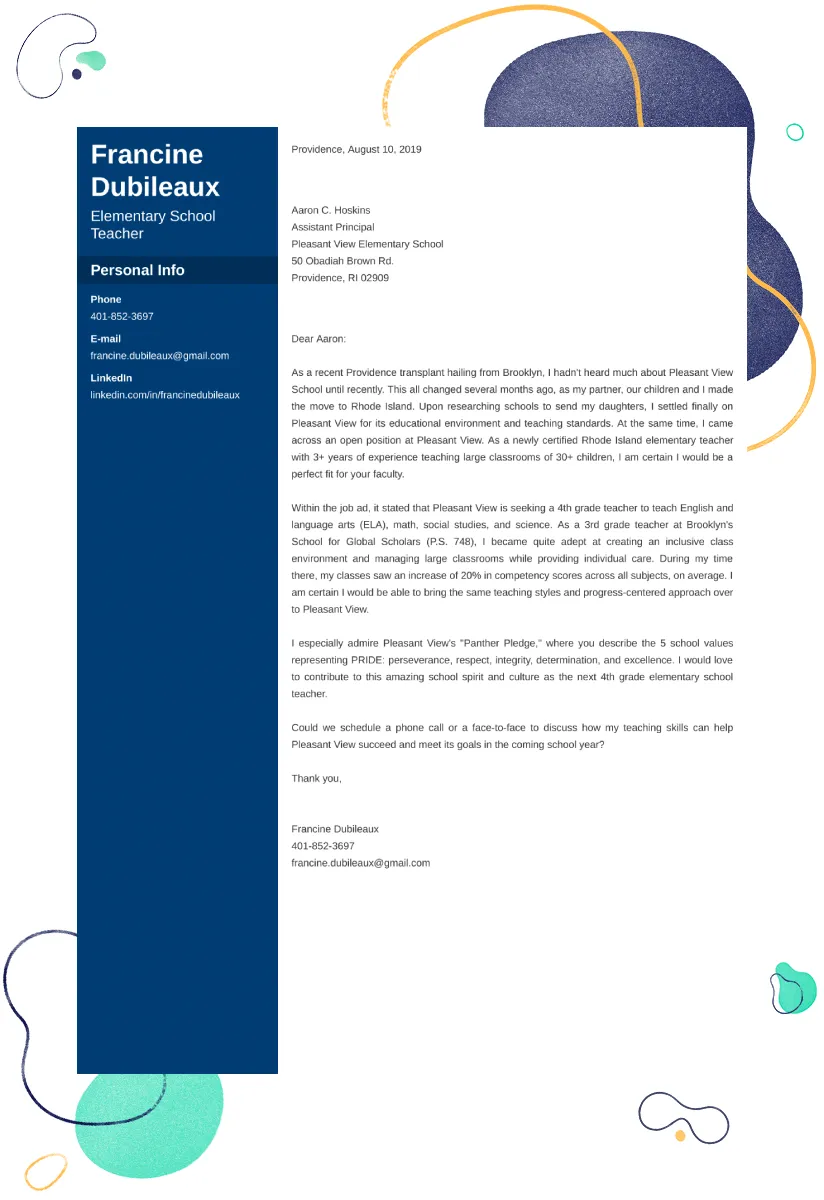Why You Need a Great Teacher Cover Letter
In the competitive field of education, a well-crafted cover letter is your first opportunity to make a lasting impression on a potential employer. It’s more than just a formality; it’s a crucial marketing tool that sets you apart from other applicants. A compelling cover letter allows you to showcase your passion for teaching, highlight your relevant skills and experience, and demonstrate how you can contribute to the school’s mission. It provides a platform to tell your unique story and explain why you are the perfect fit for the position. Without a strong cover letter, your resume might get lost in the stack, so investing time in writing a great one is an essential step in landing your dream teaching job.
Understanding the Purpose
The primary purpose of a teacher cover letter is to introduce yourself, express your interest in the specific teaching position, and persuade the hiring manager to invite you for an interview. This document provides context to your resume, elaborating on your qualifications and highlighting your key strengths in a way that a resume alone cannot. It is an opportunity to connect with the hiring manager on a personal level, demonstrating your understanding of the school’s values and needs. Moreover, a well-written cover letter indicates professionalism, attention to detail, and a genuine enthusiasm for the role, all of which are highly valued in the education sector. Think of your cover letter as a personal introduction, giving the hiring manager a glimpse of who you are and why you are the best candidate.
Grabbing the Principal’s Attention
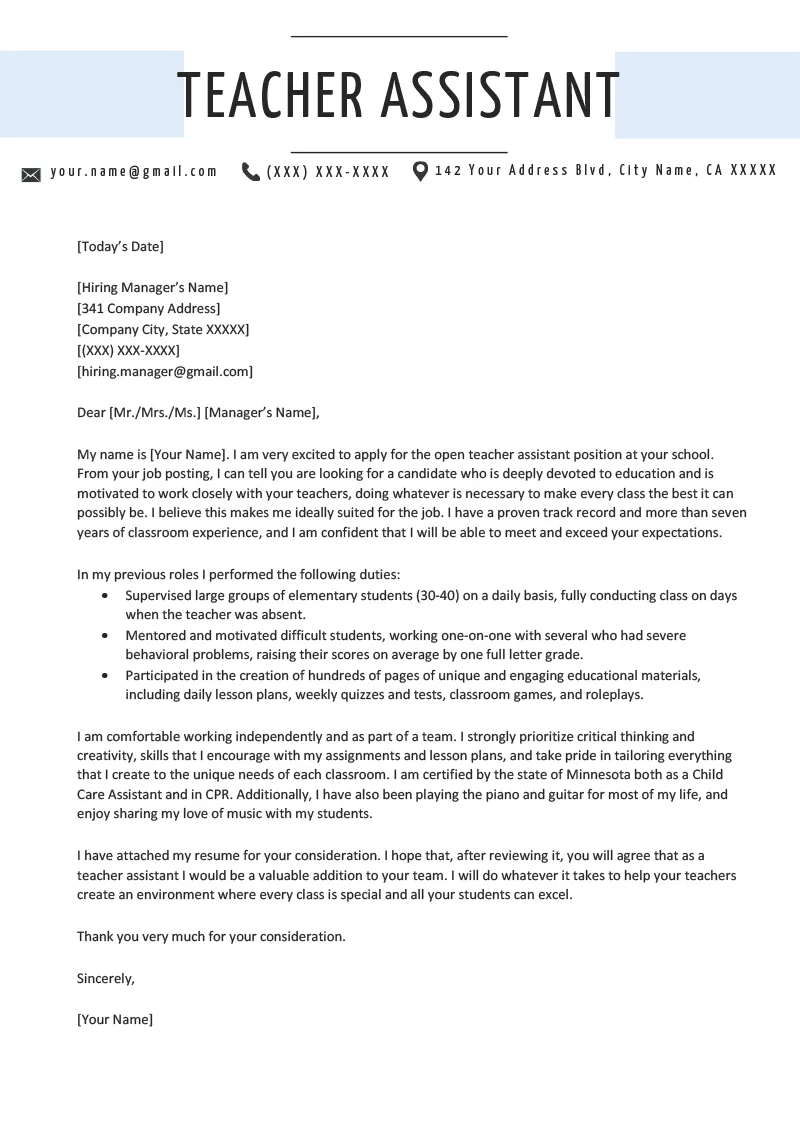
Principals and hiring managers often review numerous applications. To capture their attention, your cover letter needs to be engaging from the start. Begin with a compelling opening that immediately grabs their interest. This could be a brief anecdote, a statement of your teaching philosophy, or a specific achievement that aligns with the school’s goals. Customize each cover letter to the specific school and position; generic letters are easily identified and often discarded. Research the school’s mission, values, and recent initiatives, and then tailor your letter to address their specific needs. Highlight relevant skills and experiences that directly meet the requirements of the job description. By demonstrating a clear understanding of the school’s needs and showcasing how you can contribute, you will significantly increase your chances of getting noticed and securing an interview.
Key Components of a Winning Teacher Cover Letter
A successful teacher cover letter comprises several key components that work together to present you as a strong candidate. Structuring your letter effectively is crucial for conveying your message clearly and concisely. Each section plays a vital role in showcasing your qualifications, passion, and suitability for the position. A well-organized cover letter not only demonstrates professionalism but also makes it easier for the hiring manager to quickly understand your value proposition. Adhering to a standard format and including the essential elements ensures that you present yourself in the best possible light.
Header Your Contact Information
Your header should include your full name, professional title (e.g., Elementary School Teacher), phone number, email address, and professional social media links (if applicable). Ensure your contact information is accurate and up-to-date. The header should be at the top of the page, aligned to the left or right. The header allows the hiring manager to easily contact you if they are interested in your application. Use a clear, professional font for the header, maintaining a consistent style throughout the document. Double-check all contact details before submitting your letter to avoid any missed opportunities.
Greeting Addressing the Hiring Manager
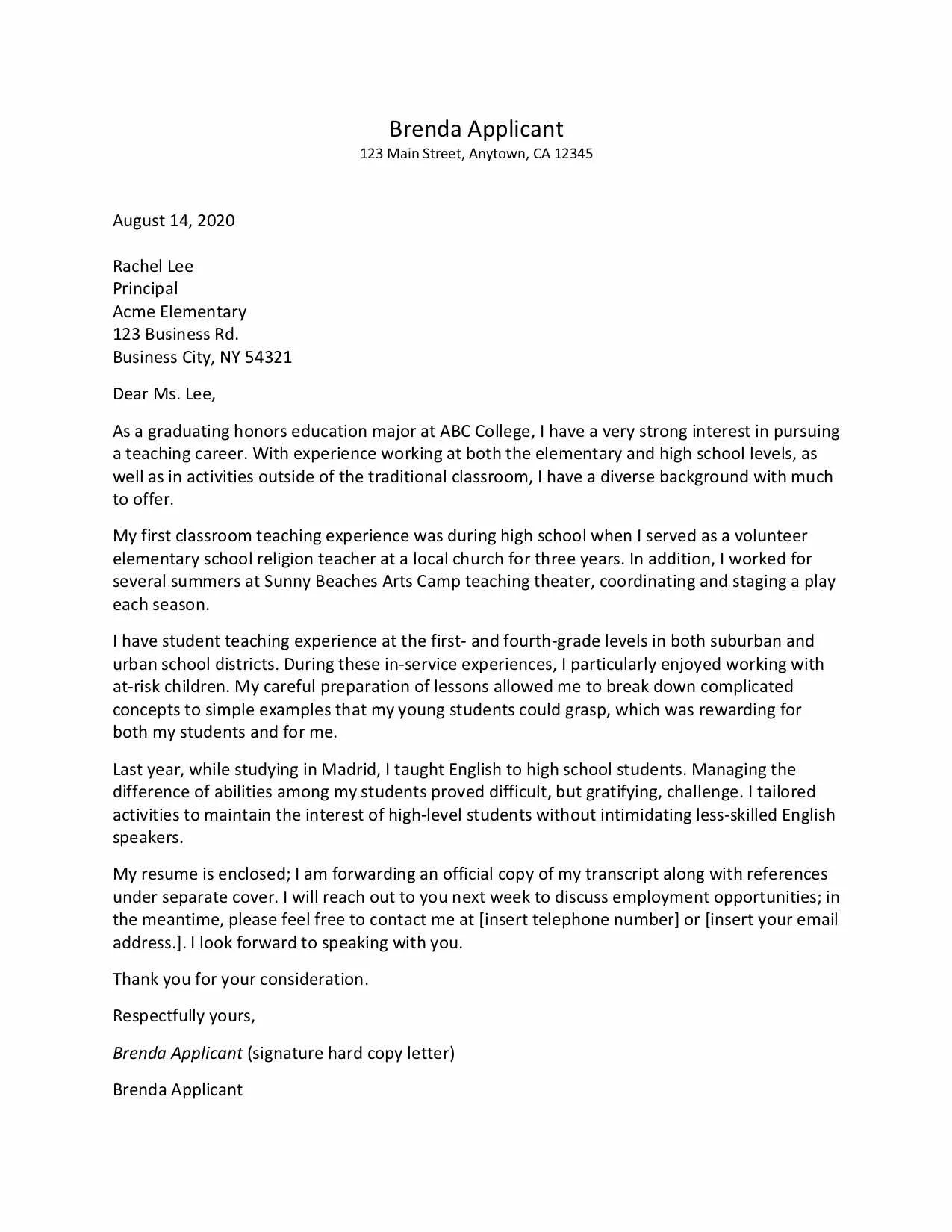
Start your cover letter with a professional greeting. If possible, address the hiring manager by name; this shows that you’ve taken the time to research the school and personalize your application. If you don’t know the hiring manager’s name, use a professional greeting such as “Dear Hiring Committee” or “Dear Principal [Last Name]”. Avoid generic greetings like “To Whom It May Concern”. This personalized approach immediately sets a professional tone and demonstrates your genuine interest in the position. Always ensure the correct spelling of the recipient’s name and title. A thoughtful greeting can make a positive first impression and show that you are detail-oriented.
Opening Paragraph Make a Strong First Impression
The opening paragraph is your opportunity to capture the hiring manager’s attention. State the specific position you are applying for and where you found the job posting. Briefly mention why you are interested in the school and the teaching position. You might include a brief statement of your teaching philosophy or highlight a relevant achievement that immediately captures the hiring manager’s interest. Keep it concise and focused, expressing your enthusiasm and qualifications in a compelling way. A strong opening paragraph immediately establishes your interest in the school, sets the tone for the rest of the letter, and encourages the reader to continue.
Body Paragraphs Showcase Your Skills and Experience
The body paragraphs should delve into your relevant skills, experiences, and accomplishments. Use specific examples to illustrate your abilities and demonstrate how you have achieved positive outcomes in previous roles. Highlight your teaching philosophy, classroom management strategies, and any specialized skills or certifications. Each paragraph should focus on a key aspect of your qualifications and provide concrete evidence of your capabilities. Tailor these paragraphs to match the requirements of the job description, emphasizing skills and experiences that directly align with the school’s needs. The body paragraphs are where you make your case for why you are the best fit for the position, showing not just telling about your abilities.
Highlighting Relevant Experience
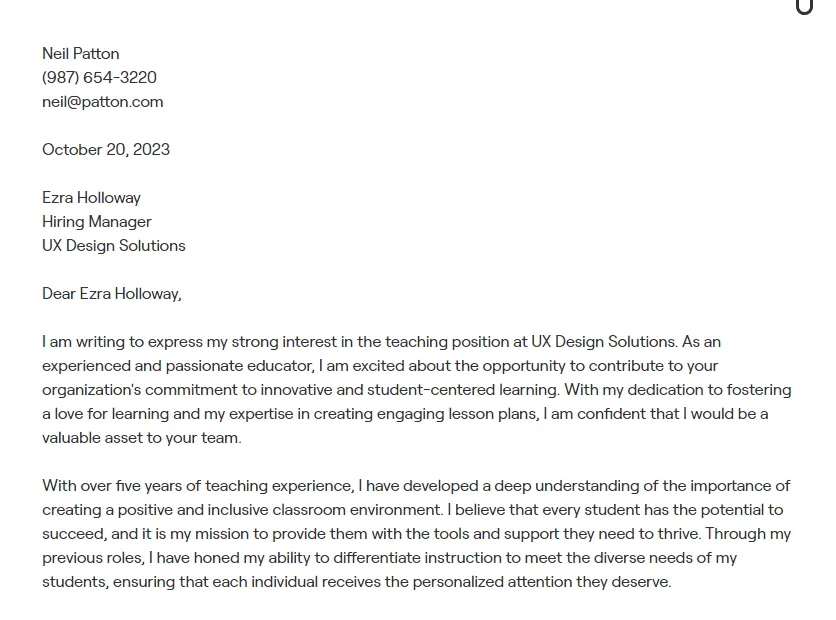
When discussing your experience, focus on the roles and responsibilities most relevant to the teaching position. Detail your previous teaching assignments, including the grade levels, subjects, and any special programs you were involved in. Explain your teaching methodologies, classroom management techniques, and any use of educational technology. Provide specific examples of how you have adapted to meet the diverse needs of students and fostered a positive learning environment. Quantify your achievements whenever possible, such as the number of students you have successfully taught or the improvement in test scores achieved. Use action verbs to describe your duties and accomplishments, making your experience sound engaging and impactful.
Quantifying Your Achievements
Quantifying your achievements makes your cover letter more compelling and demonstrates your impact as a teacher. Instead of simply stating that you improved student performance, specify the percentage increase in test scores. Mention the number of students who received awards or scholarships under your guidance. Quantify any successful initiatives, such as the number of new programs you implemented or the number of parents who actively participated in your classroom activities. Using numbers and data provides concrete evidence of your effectiveness. Quantifiable achievements not only make your letter more credible but also help you stand out from other applicants who may not provide such details.
Emphasizing Your Teaching Philosophy
Clearly articulate your teaching philosophy in the body paragraphs. Explain your approach to education, including your beliefs about student learning, classroom management, and the role of a teacher. Showcase how you create a positive and inclusive learning environment. Mention any specific strategies you use to engage students, differentiate instruction, and promote critical thinking. Demonstrate your commitment to fostering a growth mindset and inspiring a love of learning. By communicating your teaching philosophy, you demonstrate that you are a thoughtful and passionate educator whose values align with those of the school. This section helps the hiring manager understand your approach and how you make an impact on students.
Closing Paragraph Call to Action
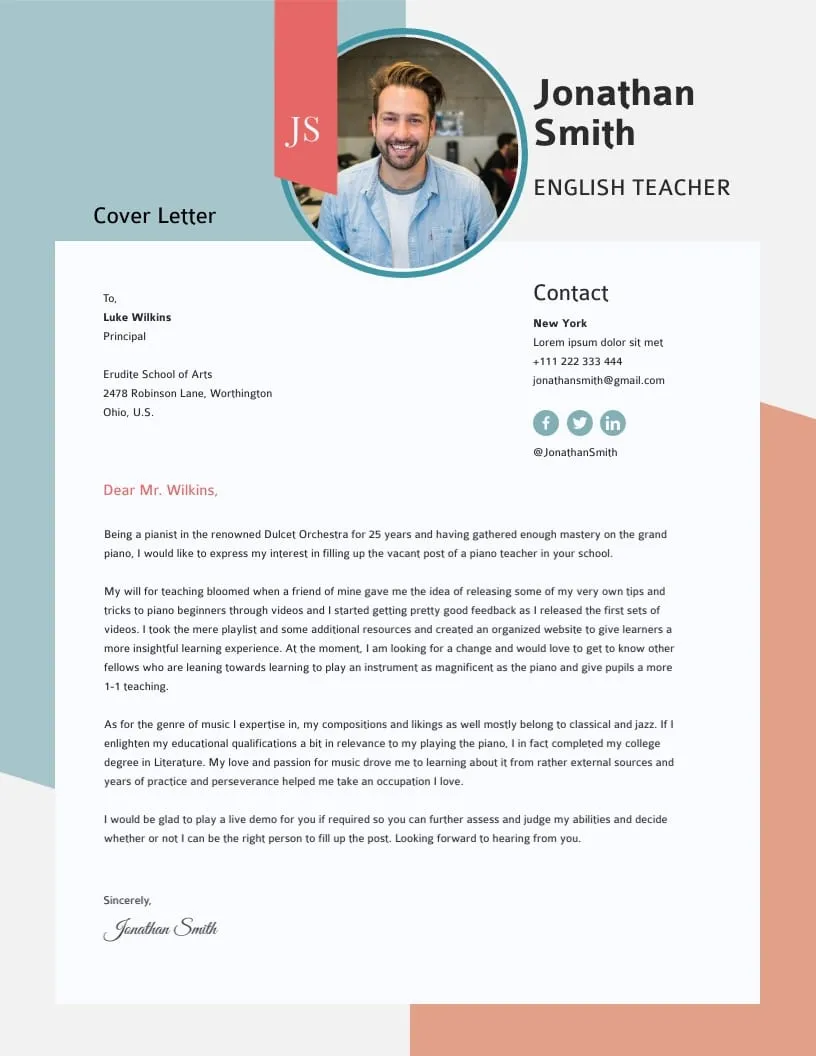
In the closing paragraph, reiterate your interest in the position and express your enthusiasm for the opportunity. Thank the hiring manager for their time and consideration. Include a call to action, such as stating your availability for an interview and providing your contact information. Be professional and confident in your tone. Reiterate your key qualifications, summarizing your most important strengths and demonstrating how you would be an asset to the school. A well-crafted closing paragraph leaves a lasting impression and encourages the hiring manager to move forward with your application.
Formatting and Design Tips
The formatting and design of your cover letter are just as important as the content. A well-formatted letter is easy to read and makes a positive impression. Pay attention to the layout, font choice, and overall presentation of your document. Ensure that your cover letter is visually appealing and reflects your professionalism. Proper formatting can make your cover letter stand out and highlight its key information.
Choosing the Right Font and Layout
Choose a professional and readable font, such as Times New Roman, Arial, or Calibri. Use a font size between 10 and 12 points for the body text. Maintain consistent formatting throughout the document, using the same font, size, and style for all sections. Use clear headings and subheadings to break up the text and make it easy to scan. Maintain consistent spacing between paragraphs and sections. A clean and organized layout makes your cover letter more visually appealing and easier for the hiring manager to read. Proper formatting shows you pay attention to details and is a sign of professionalism.
Proofreading and Editing
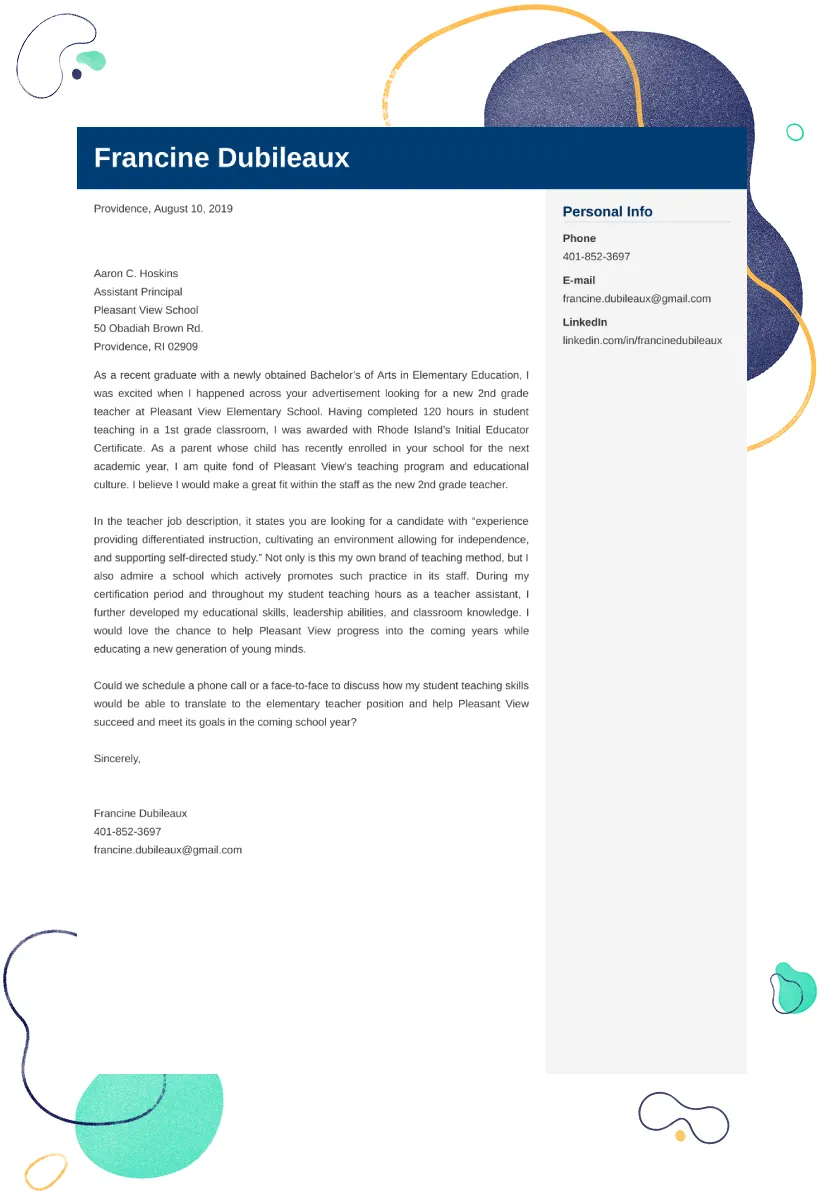
Proofread your cover letter carefully before submitting it. Check for any grammatical errors, spelling mistakes, and punctuation issues. Ensure that your writing is clear, concise, and free of jargon. Have someone else review your cover letter to catch any errors you might have missed. Correct grammar, spelling, and punctuation are critical for conveying your professionalism. Ensure that your cover letter reflects your best writing skills. Proofreading ensures that your letter presents you in the best possible light and helps you make a positive first impression.
Examples and Templates for Inspiration
Use teacher cover letter examples and templates as a guide to help you create your own cover letter. Search online for examples that match the specific teaching position and school you are applying to. Adapt the templates to showcase your unique skills, experiences, and teaching philosophy. Modify the examples to fit your qualifications and the specific requirements of the job description. While templates can be helpful, ensure that your cover letter is personalized to show your genuine interest in the school. Remember to proofread your cover letter before submitting it. Adapt and personalize the provided templates to best represent you and your experiences. Using examples and templates can save time and provide a structured starting point for crafting an effective cover letter.
Writing a compelling teacher cover letter is a critical step in securing your dream teaching job. By following these guidelines, you can create a cover letter that effectively highlights your skills, experience, and passion for teaching. Remember to customize each cover letter to the specific school and position, showcasing your unique qualifications and demonstrating your understanding of the school’s mission. Proofread your letter carefully, and use examples and templates as inspiration to create a polished and professional document. By taking the time to write a great cover letter, you increase your chances of getting noticed, securing an interview, and landing the teaching job you’ve always wanted.
